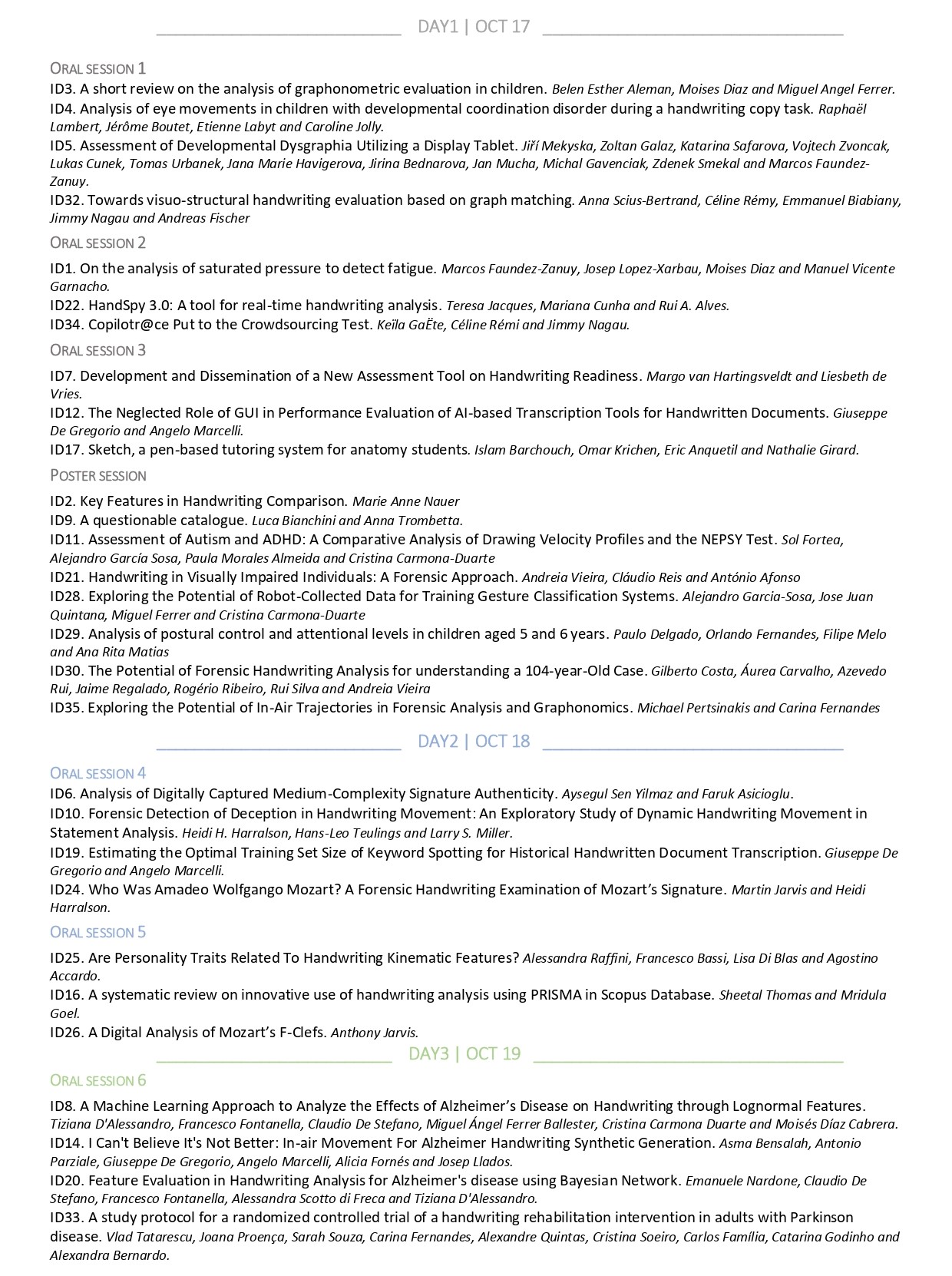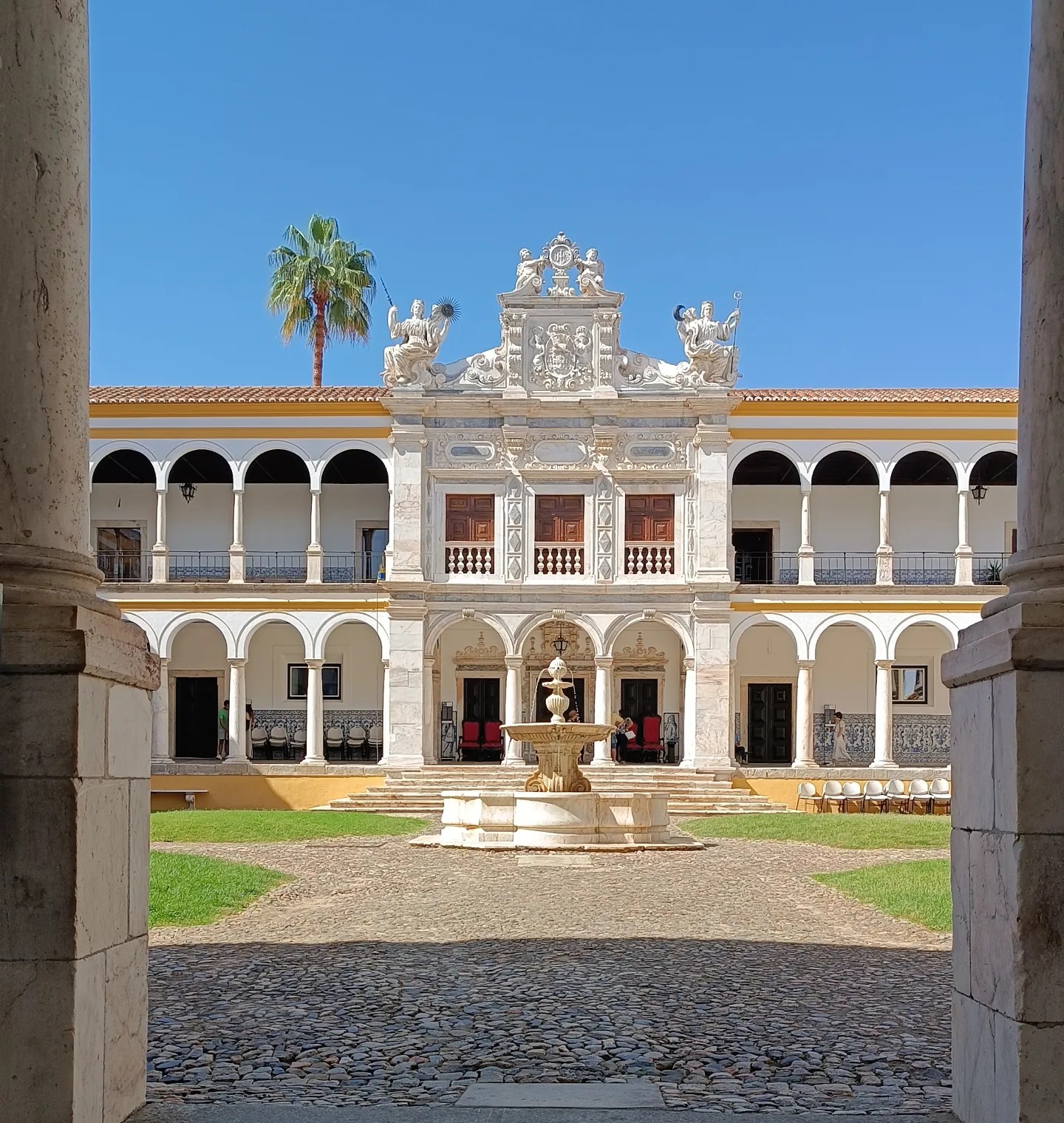
IGS 2023: Conference of the International Graphonomics Society
Universidade de Évora, Portugal
October 16-19, 2023


The Doctoral Consortium

Welcome Reception:
Monday, October 16 at Colégio Espírito Santo, room 129

Rua do Cardeal Rei 6, 7000-645 Évora
KEYNOTE SPEAKERS

Tomasz Dziedzic
A New Approach to Best Practice in the Forensic Examination
Tomasz Dziedzic, PhD, ORCID: 0000-0002-1942-6007, expert in the field of forensic handwriting and document examination at the Institute of Forensic Research in Krakow, Poland. Chairman of the European Network of Handwriting Examiners (ENFHEX), a working group of the European Network of Forensic Science Institutes (ENFSI). From 2018 to 2020 the Lead of a team of international researchers who developed the first Best Practice Manual for forensic examination of Digitally Captured Signatures (DCS). Author of research papers and conference presentations, a large part of which was dedicated to DCS, and a trainer in this field. Member of the Advisory Committee for Assessments at the Netherlands Register of Court Experts (NRGD).

Rui Alves
How to build a writer from handwriting
Rui A. Alves is Associate Professor of Psychology at the University of Porto. His main researchinterests are the cognitive and affective processes in writing, which he studies usingexperimental methods and logging tools. He and his team have studied thedevelopment oftext production using an own–developed handwriting logging software (HandSpy) anddeveloped many evidence-based writing interventions addressing cognitive, motivational, andself-regulatory aspects of writing. He serves on several editorialboards and is associate editorof the journal Reading & Writing, Springer. Currently, he is the interim coordinator of theEuropean Literacy Network, ELN, and serves on the executive boards of ISAWR and EARLI.

Hans-Leo Teulings
Graphonomics in Human Movement
Hans-Leo Teulings, PhD, received an MSc in experimental physics and biophysics and a PhD in experimental psychology at the Radboud University of Nijmegen, The Netherlands. During more than 30 years he pioneered handwriting movement recording and analysis. He contributed to grants and research papers while working at the universities of Nijmegen (The Netherlands), Trondheim (Norway), Cambridge (UK), Genoa (Italy), Madison (Wisconsin, USA), and Tempe (Arizona, USA). Since 1997 he is CEO of NeuroScript, LLC. NeuroScript’s mission is to support researchers worldwide with developing their handwriting applications using NeuroScript’s MovAlyzeR handwriting recording and analysis software and several other software systems.
SPECIAL SESSIONS

Special Session 1
Orlando Fernandes
Nonlinear Analysis for Human Movement Variability
How Does the Body’s Motor Control System Deal with Repetition?
This session will present a study of human movement variability with a focus on nonlinear Dynamics, examining the characteristics of human movement within this framework, exploring human movement in repetition, and explaining how and why this research analyzes human movement data. This study takes an in-depth look into the nonlinear dynamics of systems within and around us, investigates the temporal structure of variability, and discusses the properties of chaos and fractals as they relate to human movement. Dynamical Systems theory suggests that biological systems self-organize according to the environment, biomechanical and morphological constraints to find the most stable solution for producing a given movement. Movement analysis using nonlinear dynamical systems theory for human behavior provides a better understanding of running pathologies, psychomotor problems, or motor control problems. The concepts of variability and chaotic variations in human movement, together with the advanced tools used to measure human movement variability open new perspectives to guide practice and a fundamental complementary means of diagnosis.
In summary Human Movement Variability can be described as the normal variations that occur in motor performance of a task over multiple repetitions.

Special Session 2
Réjean Plamondon
Lognormality: an open window on neuromotor control
The Kinematic Theory of human movement can describe, using a fundamental equation called the “lognormal function”, the speed of an end-effector. Various software Packages have been developed to reverse-engineer movements by reconstructing them, and this reconstruction provides central parameters that represent the state of the brain, and peripheral parameters that describe the properties of the neuromuscular systems that produced the movement. Over the years, the theory has been tested and validated in numerous experiments, and successfully used to describe the essential properties of the velocity profiles of the fingers, wrist, trunk, head and eyes, etc. This led to postulate the Lognormality Principle, which states that the lognormal impulse response of a neuromuscular system emerges from a convergent process driven by the central limit theorem.
This special session will present the work carried out at the Scribens laboratory and its affiliated laboratories. It will summarize the 17 talks presented at the ACFAS 2023 conference, describing the key elements of the theory, some gesture analysis algorithms that have emerged from it, and then provide an overview of its various applications, particularly in the fields of biomedical engineering, human-machine interaction.
INTRODUCTION
The Lognormality Principle : theory and overview of applications.
1- AGING
1.1 Remote monitoring of stroke patients via 3D kinematics and artificial intelligence – Asma Bensalah;
1.2 Kinematic signature in people with Parkinson’s and psoriatic arthritis: potential of the sigma-lognormal approach – Karina Lebel;
1.3 Contribution of lognormality in the identification of kinematic biomarkers in the identification and early differential diagnosis of Parkinson’s disease – Romeo Salameh, Guillaume Seguin De Broin;
2- PERFORMANCE
2.1 Deep reinforcement learning for ECG modeling using lognormals – Christian O’Reilly;
2.2 Kinematic theory, muscle fatigue and optimality: contribution to the biomechanics of the upper limb – Mickael Begon;
2.3 Objective analysis of surgical performance thanks to a simulator augmented by artificial vision – Olivier Desbiens, Aymeric Guy, Catherine Forest-Nault;
2.4 Kinematic reconstruction of static calligraphic traces from curvilinear features – Frédéric Fol Leymarie;
3- TECHNIQUES
3.1 Separation Algorithm and Evaluation Applied to the Delta-Lognormal Model – Simon-Pierre Boyoguéno Bidias;
3.2 Analysis of three-dimensional movements with the sigma-lognormal model – Andreas Fischer;
3.3 Comparison of symbolic and connectionist algorithms to correlate the age of healthy children with Sigma – Lognormal neuromotor parameters – Zigeng Zhang;
4- CHILDHOOD
4.1 Interest of kinematic theory and its lognormal models in assessing graphomotor skills in kindergarten and first grade students -Denis Alamargot, Marie-France Morin;
4.2 The use of the Lognormality Principle for the characterization and analysis of graphomotor behaviours involving young learners in a school context – Céline Rémi;
4.3 Lognormality in children with mild traumatic brain injury: a pilot study – Nadir Faci;
4.4 Kinematic analyses of rapid pencil strokes produced by children with ADHD – Raphaëlle Fortin;
4.5 Identification of children born prematurely at risk of developmental difficulties at preschool age: usefulness of the pencil stroke test -Marie-Noëlle Simard;
4.6 Exploring the Benefits of Virtual Reality Lognormality Analysis for Diagnosing ADHD in Children – Caroline Bazinet;
CONCLUSION – Réjean Plamondon



